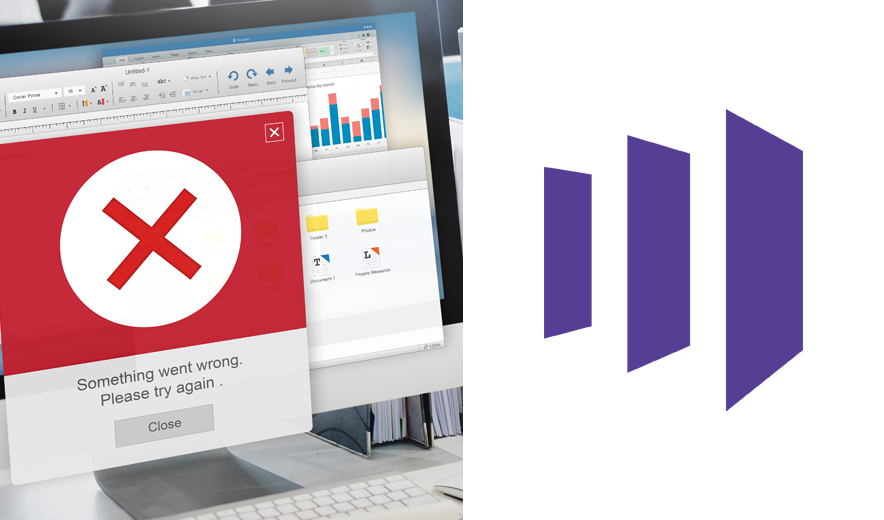How to Avoid these Common Marketo Template Implementation Issues
If you are a marketing professional, you are likely overwhelmed with so many tasks on your plate. And with every passing day, as your business makes progress, your workload will also increase. Maybe you have implemented the latest marketing automation tools in your system to assist you in your digital marketing task. But are you making progress in terms of increasing your speed of work?
Well, Marketo, one of the leading digital marketing tools, has thought through all the challenges a marketer may face due to increasing workload and has enabled its users to implement Marketo templates. Marketo program templates are fully built-out programs with placeholders for elements like text and media.
These templates help enterprise marketers to save time and improve brand consistency significantly. Moreover, with Marketo templates, you can make the most of all the benefits that Marketo marketing automation offers. However, Marketo templates can provide a holistic strategy only with tokens and clear folder hierarchies. Thus, due to a lack of bandwidth or changing business needs, marketing operations teams often do not leverage Marketo templates to their fullest potential. To make the most of Marketo templates and scale enterprise marketing efforts properly, you need to gather insights beyond email and landing page asset templates. Remember, asset templates can accelerate individual email builds, but program templates will help you streamline your entire campaign. By using asset templates and program templates, you can further reduce Marketo campaign execution time and effort. To avoid some common Marketo implementation challenges, here is a list of questions you need to ask:
Are you using only asset templates and not program templates?
Ignoring program templates is one of the most common mistakes made by marketers as such templates are less resource-intensive to create email templates. But using only asset templates will not give you the full value that Marketo provides. Well-designed program templates are considered time-saving as they eliminate the vast majority of the manual work required to execute a campaign in Marketo. If you want to launch future programs in a fraction of the time, you need to build your program templates and use them in the right way.
Are you making edits to master Marketo templates?
Modifying your master Marketo templates instead of cloning them first can result in a long process to diagnose and correct broken assets. Instead, adopt a centralized marketing model that will provide access to all users who are not Marketo experts and ask your marketing operations team to execute campaign requests. You can also use Marketo Workspaces to set up a workspace that can be cloned to other Workspaces meant to house master templates. Make sure that all asset templates are shared across all Workspaces. If you want marketers to create campaigns at their own pace while protecting your master templates’ integrity, use software that allows you to create a campaign request intake form that maps to the tokens in your program templates. This will result in automatic campaign generation inside Marketo.
Are you avoiding program-level tokens?
Program-level tokens are essential for streamlining campaign operations as the changes you make are automatically applied across all assets within the program. Using a robust set of program templates that employ program-level tokens gives marketers significant efficiency.
Are you avoiding universal tokens?
Universal tokens are useful while refreshing your Marketo templates. Whether you plan to rebrand or update your business address, if you are not using universal tokens, you will need to develop a whole new set of templates or modify each of your existing templates one by one. With a universal token, the user needs to modify just one place (the token), and the change will propagate across all assets where the token is used. Make the most of Marketo with consistent content that may require time-sensitive changes. Include universal tokens in your program template strategy.
Do you have too many Marketo templates?
As your business grows, the number of templates you use also starts increasing. This may lead to users struggling to determine which templates to use, are up to date, or are broken. Too many Marketo templates defeat the purpose of having templates to build consistency, quality, efficiency, and time savings. Instead, you can reduce the total number of templates in circulation and make a standardized list of templates. Don’t forget to follow asset template best practices and create a modular asset template featuring modules that can be kept or deleted.
Are you able to use templates autonomously?
Marketo templates aim to enable non-expert users to clone and modify them for individual campaigns easily. Often, marketing operations are not trained to use the templates, making campaign development and experimentation difficult. Make sure you provide training and documentation on template use, such as creating a program launch QA checklist for end-users. This will make sure that even commonly forgotten elements are updated as required. Most marketing work management tools available in the market allow you to customize intake forms where the fields correspond to the tokens that need to be updated.
The Marketo marketing automation tool has a plethora of abilities to speed up your digital marketing process to your objective faster. But, implementing Marketo templates will make your digital marketing platform more efficient. Marketo templates aim to reduce the repetitive aspects of campaign creation. The more you automate your marketing campaigns, the more time marketers receive for the growing list of activities they are tasked with. This will help you boost your digital marketing strategies even without the help of a Marketo admin.

